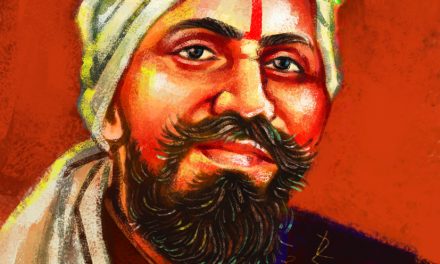VOLUME X – CHAPTER 10
THE ASIAD SPIRIT AND KENDRIYA VIDYALAYA SANGATHAN

Published in “Sangam” – KVS House Magazine
Greatest reward – smile on their faces
Yesterday evening we all saw the closing ceremony of the Asiad ’82 on the T.V. At one point they showed the sunset. That set in motion a train of thoughts in my mind which I want to share with you today. Even as the sun set beyond the empty stadia, even as the curtain fell on Asiad’s greatest sports spectacular, the spirit of endeavour will live on–the spirit of challenge, the spirit to excel and overcome not only others but one’s own records, the spirit that glows as brightly as the torch itself. I asked myself a question: What should this Asiad spirit mean to us? As we have been proud to be a part of this moment as Indians, we have to be proud to be a part of this great organisation, our Kendriya Vidyalaya Sangathan.
If people choose at K.V. it should not be because the fees are low or because it helps people who are transferred, but because they respect our high standards. It should say a lot for their judgement. We must be able to tell these parents – Our 1200 Kendriya Vidyalayas–(in 2020) that is expertise, experience and that is your confidence, that is your guarantee of A-1 performance.
Our greatest reward is the smile on their faces. When can we see this smile? Only when the parents find and acknowledge that we have transformed their children into top class products. A K.V. pupil should be a product that needs no introduction. In our Vidyalayas, let us make our pupils so trim physically and mentally that any visitor to the school cannot but give a salute to their smartness. In their zest of life we will find a reason for our pride. In our K.V.s “the best has no bounds” shall be our motto. Should we settle for anything less than this? Let each K.V. pupil present a performance that shall become at once the envy and aspiration of every other school in the country. Each a top class product we can produce only from a total involvement.
Is each one of our K.V. a guarantee of quality today? What answer do we have for this question? It takes more than buildings and equipment to make a better student. It takes men. Men dedicated to their work with an insatiable desire for perfection. While others are content with legendary images, we should not. Let us set outstanding perform standards. Our K.V. training should aim at precision, and develop a wide range of develops their capabilities. Let quality be an obsession with us. A pursuit of excellence is rewarded by progress and achievement. Our technical excellence should be matched with elegance. Let corporate professionalism be a significant characteristic of K.Vs.
Corporate—what does the modern management term mean to us? I feel that when a new teacher joins K.V.S. he should realise that it is the beginning of a lifelong commitment, firmly believe that our greatest asset is our staff—highly qualified and trained manpower. Expertise and experience are its field-proven skills.
When I talk about our staff—seniors and juniors—I am reminded of an article I read in Hamaara—the House journal of Hindustan Lever Ltd. Therein I found the views of four different personalities interesting in the context of what I have just now said. Dr. A.S. Ganguly, Chairman says: “Senior employees should spread the company’s success story among their younger colleagues. The younger employees would not have had the opportunity of knowing what the company was like in earlier years and what its rise to its present immense stature entailed. Knowing this is essential because the future of your company rests in the hands of its younger employees.” Shri S.D. Das, Area Personnel Manager says: “The younger employees learn the factory’s cultural tradition by interacting with the older ones. This is quite unique.” Shri Ram Prasad, Supervisor says: “We old timers have built a tradition of immense love for this factory. We all really worked for it. Shri Sudangu Roy, Packer says: “I believe in growth, I think that if the company grows, the people also will grow with it.”
From these four statements, can we all, young and old, take a lesson? Every year we are growing. We are supposed to serve. The question before us is—shall we grow to serve or shall we serve to grow? Growth and stability—there are two factors before us. Shall we have growth with stability, or stability with growth? This is the dilemma before us today.
We are more than fortunate in the quality of our people. However, the problem we face today is to ensure the continuance of the quality of our personnel in the years ahead. The increasing complexity and competitiveness of the fast changing world of education demands better quality and effectiveness in our staff in the future. This means that our successors should be better than us.
We judge ourselves by what we feel capable of doing. Others judge us by what we have done. Let us in K.V.S. do our business with confidence and not as a necessity—confidence in ourselves and in our organisation. It is essential and an urgent necessity that we should increase our I.Q.—not the Intelligence Quotient but our image quotient. The future of any organisation will be determined by the quality of its people. Their well-being and growth will be our abiding concern. Only the right people, with the right skills, in the right places can meet the exacting demands of the future. Our abilities should meet our aspirations. The Principal and all staff should together open out new horizons for our pupils. We shall clasp our hands in mutual friendship, mutual respect and mutual trust. Let us join together to gather strength.
Let me close by presenting to you a K.V.S. Panch Sheel for all of us to ponder over and practise:

Proud of our past and confident of our future let us forge ahead towards greater heights of achievement and acclaim.
VOLUME X – CHAPTER 11
ACTIVISING THE CLASSROOM

Abstract of the address delivered by Prof. N. Shanmugam, at the Seminar of Head Masters of Coimbatore District in St. Michael’s High School, Coimbatore in 1975.
I. A class
Group of learners (including the teacher who pool and share their knowledge and experiences.
II. A classroom
A planned and Arranged Environment characterised by Balance, Timing, Sensitivity and Artistic Arrangement.
III. Learning in the Class
(a) Acquisition, Assessment, and Assimilation of all useful and relevant information.
(b) Learning through experiences closely related to their lives.
IV. Why Activise?
(a) Pupils’ natural instinct of curiosity to know what they do not know.
(b) Psychological and physical urge for activity
(c) Teaching to be based on the Three A’s Age, Ability and Aptitude rather then on the Three R’s.
(d) Education is proper coordination of the Head, Hand and Heart.
(e) “If I hear I forget; if I see I understand; if I do I remember”.
(f) To promote and foster creative thinking.
V. Preliminaries to Activisation:-
(a) Understanding pupils, their homes, families and communities, and themes
(b) Knowledge of their Social Distances and Tensions – through Sociograms.
(c) Knowledge of their abilities & aptitude.
(d) Proper preplanning and organisation of the course – with reference to the content and methods.
(e) Good preparation with regards to the collection of all useful and necessary reference material and aids etc.
VI. How to Activise?
(a) Make the room breathe the air of Social Studies
(b) Provide a Natural start to the unit.
(c) Take stock of their previous knowledge about the course or topics.
(d) Arouse in them an interest to explore further by providing a short, sweet and crisp introduction.
(e) Make them formulate the goals for topics.
(f) Help them to break the Unit into manageable & understandable division.
(g) Form groups based on their own natural choice of divisions.
(h) Inform them as to where and how to get the necessary information.
(i) Guide them through their discussion and reporting.
(j) Devise suitable Projects – to be understood, planned and executed easily within the available Time and Financial limits.
(k) Pose problems related to their course or topic to make them doubt, think, collect, collate, assess and assimilate.
(l) Provide scope for debates, discussion and exhibition of histrionic talents.
(m) Scope for free and full participation by all the pupils.
(n) Freedom to question.
(o) Devise interesting Games suited to their level and related to the Unit.
(p) Use of the Role playing Method.
(q) Use of the Brain Storming Method.
(r) Use of the Laboratory Method.
To be done on individual and group basis (s) Preparation of Cut-outs, Models, Exhibits.
(t) Preparation of Maps, Charts, Graphs.
(u) Collection of Pictures and Preparations of Albums.
(v) Collection of specimens of Industrial and Agricultural product etc.
VII. Evaluation of activisation: In terms of the Development of:-
(a) Essential skills.
(b) Right attitudes.
(c) Basic information.
(d) Healthy Habits.
(e) Group consciousness.
(f) National awareness.
(g) Tolerance and Understanding.
(h) Love for reading.
(i) Critical thinking.
(j) Emotional Balance.
(k) Love for Fine Arts.
VIII. Evaluation by:
(a) The Pupil – Self Evaluation
(b) The Teacher – Observation and Records.
(c) The Community – Resultant Behaviour.
IX. Problems:-
(a) Lack of time.
(b) Look of initiative on the part of teacher.
(c) Inadequate planning and preparation.
(d) Maintenance of discipline.
(e) Lack of encouragement from the Headmaster and other colleagues.
(f) Involves extra class hour work.
(g) The Nightmare of the Syllabus.
(h) The heavy hand of the Inspectorate.
X. Values:
(a) Joy in working dosely with the pupils.
(b) Gap between the teacher and the pupil bridged exactly.
(c) Better understanding of the pupils.
(d) Respect gained from the pupil is through love and not through fear.
(e) Learning becomes more deep, sound and purposeful.
XI. Total approach:
Helping the pupils to rediscover themselves.
~~~~~
DEVOTION fosters the highest virtue; it is the most precious treasure, it is the truest path, the only way to God. Man must live in Bakthi; for Bakthi; through Bakthi. For Bakthi is Love of the purest and the noblest variety. Such love is the breath that sustains life that supports the Soul in the effort to merge in the super-soul. The years of life spent without the Light of Love are years of ruin, of dust and disease. One could as well be dead and decay forever. – Bhagawan Sri Sathya Sai Baba




